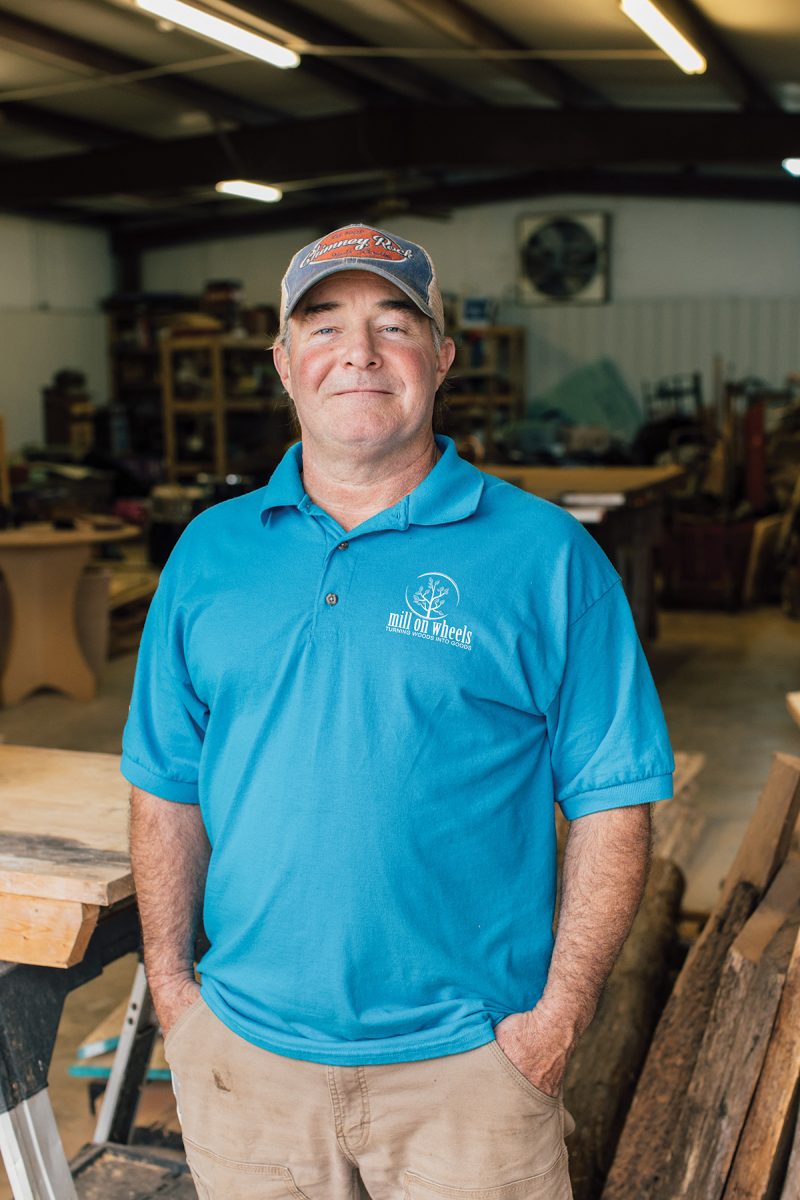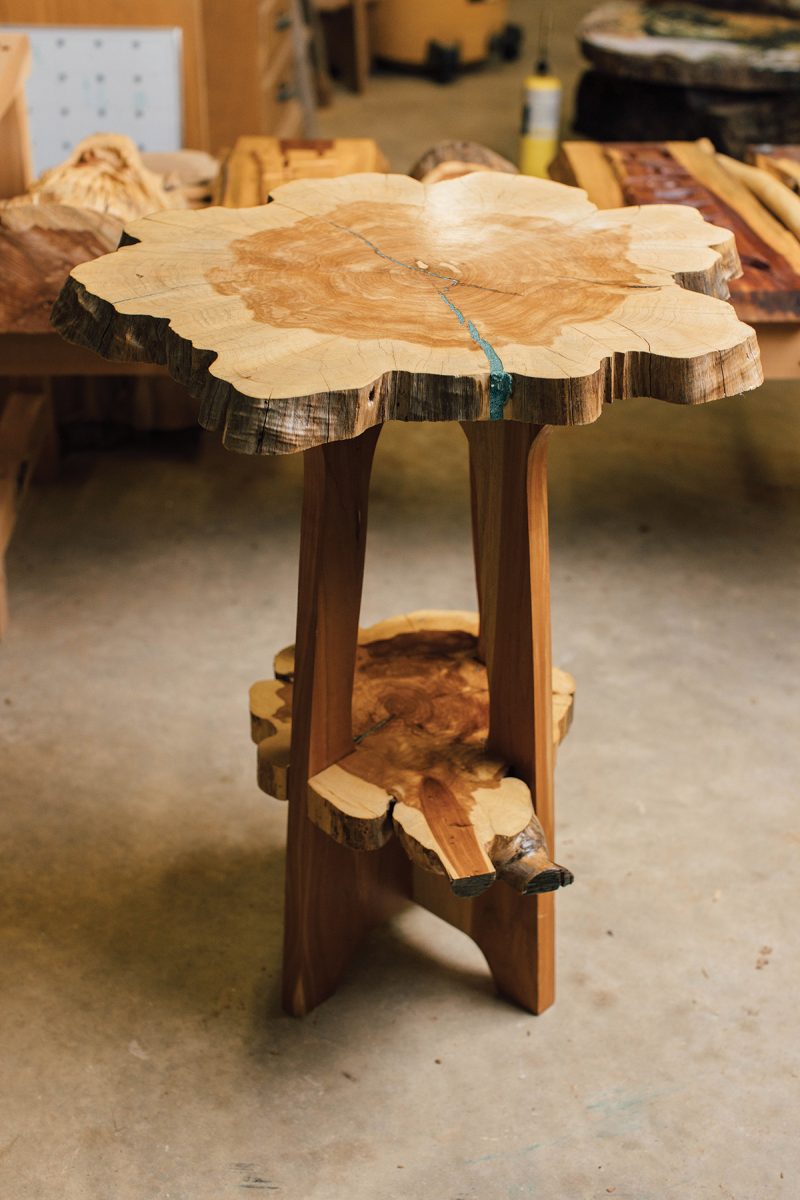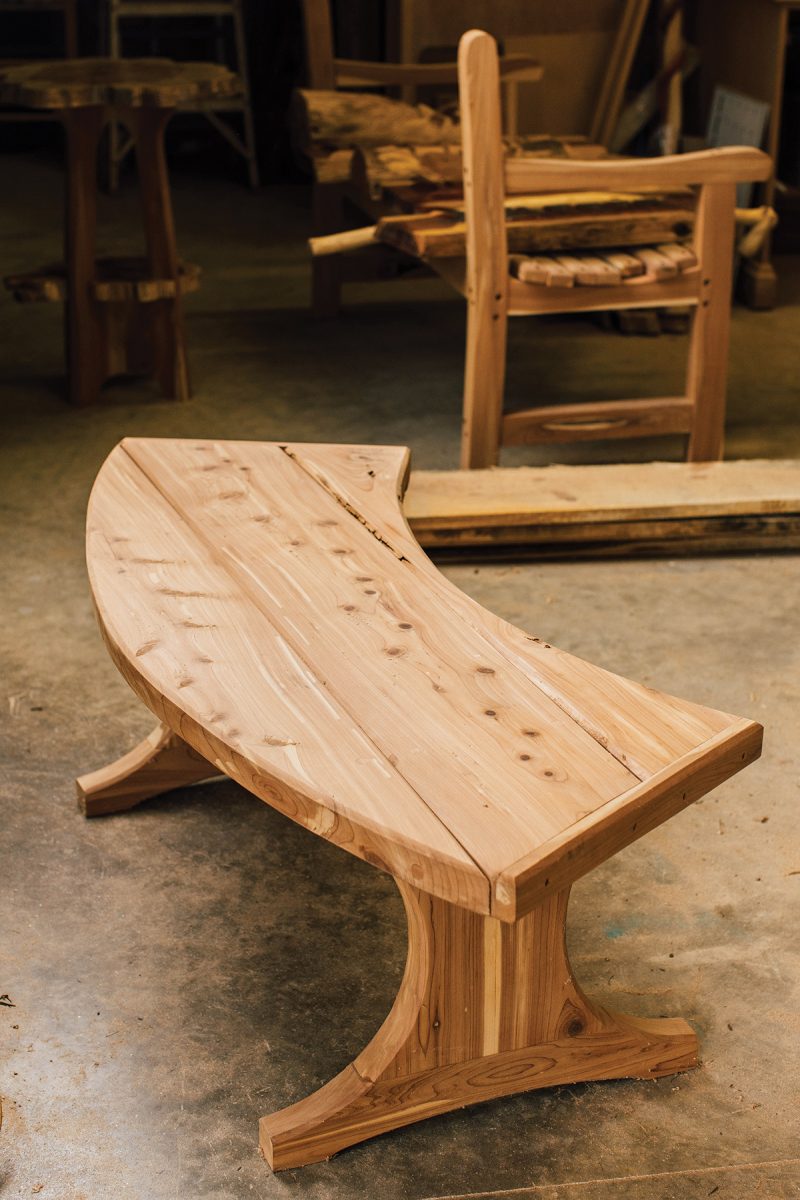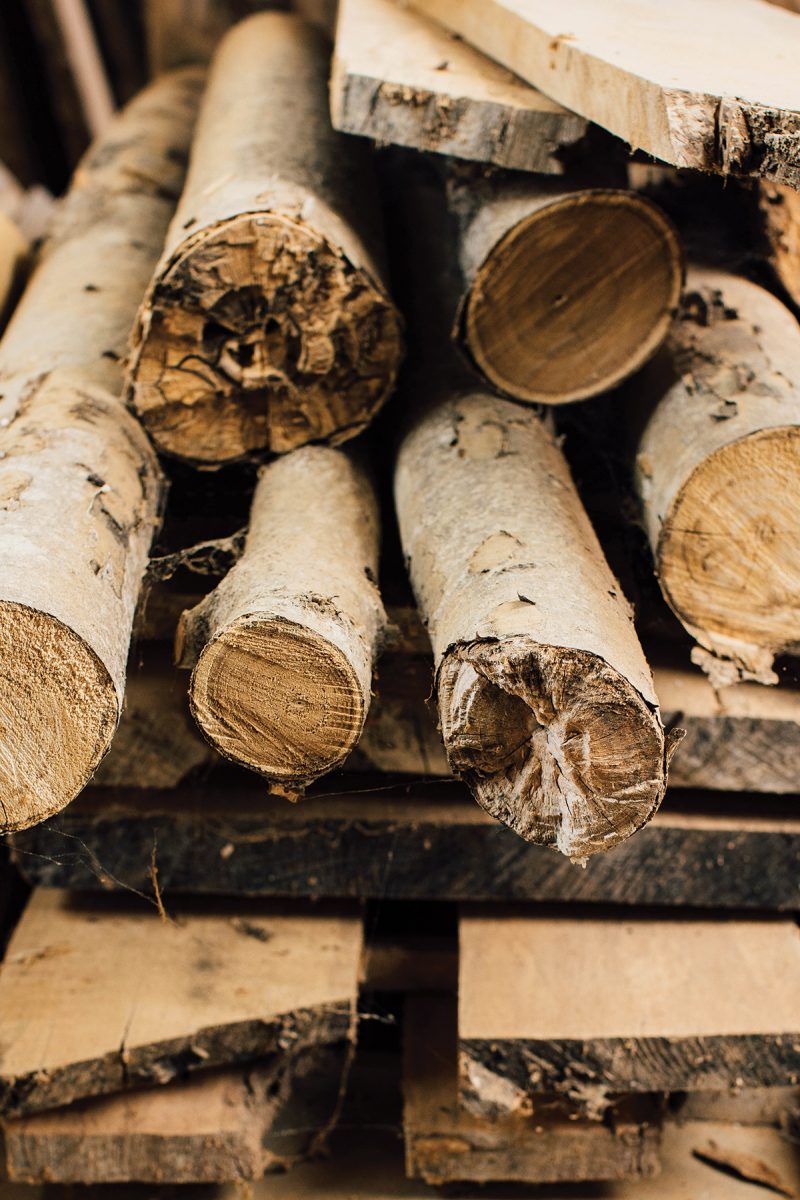Mobile sawyer mills wood on site to create heirloom projects

Photo by Jack Robert
It’s not uncommon for Chris Carroll’s clients to cry about a tree. It might be the old oak their great grandfather planted, the maple they climbed on as children, or the outdoor pine their family decorated each year for Christmas.
And now — due to weather, age, or other circumstances — that tree has fallen or must be taken down, and they can’t bear the thought of losing it. But Chris knows trees, and homeowners call on his expertise to find a way to not only preserve the wood, but also the memories attached to it.

Photo by Jack Robert
“People can get real emotional about certain trees,” the sawyer/woodcarver confirms. “I’ve worked with wood my entire life, and I even get choked up a little bit when I hear their stories, about how much a tree has impacted their lives.
“My job is to understand [that] and to find a way for the client to keep the wood.” This comes in the form of floor planks, bowls, tables, chairs — even totem poles. “I make whatever gives them comfort and happy memories,” says Chris. “Otherwise, the wood would be taken to the landfill. When they hear that, they really cry.”

Chris brings his mobile sawmill business, Mill on Wheels, to wherever the felled tree happens to be. (He serves Upstate South Carolina and Western and Piedmont North Carolina.) Milling on site saves customers the expense and hassle of transporting their tree to a stationary mill.
“That’s the beauty of Mill on Wheels,” says Chris’ wife, Amy. As co-owner, she handles the business’ paperwork and coordinates logistics. “[The client] can actually see the entire process and understand what it takes to make their request come true. Many of the larger trees are turned into flooring planks. Others want the wood made into something creative and useful.”

Photo by Jack Robert
Whimsical isn’t out of the question, either. As an artisan woodcarver, Chris has turned former trees into benches, tables, walking sticks, chairs, swings, turned bowls, and statues of animals. “He’s done walking sticks with snakes that are truly works of art,” says Amy. “He spends well over 100 hours carving the individual scales on the snake’s body. He’s also taken a stump and a large, thick slab of wood to make a bathroom vanity for a cabin that was also made of recycled wood.”
“The most important thing to remember about repurposing a tree into lumber is to plan,” says Chris. “There are many factors to consider … it takes time for different types of wood to dry and cure. Depending on the end use, it may need to be kiln dried, planed, or tongue-and-grooved [if used for flooring].”
Some landowners need to learn what kind of trees they have before anything else. Chris also educates them about how much lumber to expect and which species work best for various projects, says Amy.
“We like to ask people, ‘What’s in your woods?’”
Mill on Wheels, Tryon. For more information, call 828-536-9663 or see millonwheels.com.
